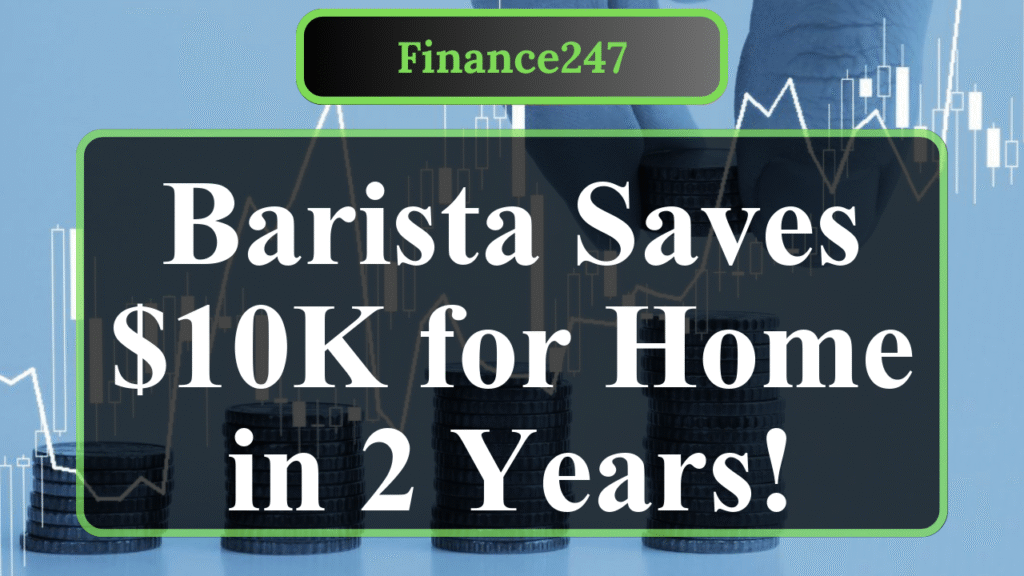A Gen Z barista saved $10,000 for a home down payment through disciplined budgeting, side hustles, and smart financial choices. By cutting discretionary spending, leveraging social media for extra income, and using high-yield savings accounts, they achieved their goal in two years. The article details their strategies, including tracking expenses, prioritizing savings, and avoiding lifestyle inflation.
A Gen Z Barista’s Journey to Saving $10,000 for a Home
Saving for a home down payment is a daunting task, especially for young adults facing rising housing costs and stagnant wages. Yet, a 24-year-old Gen Z barista, Mia Thompson (name changed for privacy), managed to save $10,000 in just two years while earning $15 per hour in a mid-sized U.S. city. Her story highlights practical financial strategies that can inspire others aiming for homeownership.
Mia’s journey began with a clear goal: owning a home by age 30. With median U.S. home prices at $410,000, according to the St. Louis Fed, a typical 3.5% down payment for an FHA loan requires about $14,350. Mia aimed for $10,000 as a starting point, knowing she’d need to supplement it later. Her annual income as a barista was approximately $31,200, assuming a 40-hour workweek. After taxes, rent ($850/month), and basic expenses, saving seemed nearly impossible. However, Mia employed several key strategies to make it happen.
First, she embraced strict budgeting. Using apps like Rocket Money, Mia tracked every dollar spent. She allocated 50% of her income to necessities (rent, utilities, groceries), 20% to savings, and 30% to discretionary spending, aligning with the 50/20/30 budgeting rule. By cooking at home and limiting eating out to once a week, she saved an estimated $200 monthly compared to peers who spent $400 on dining, per a 2023 Consumer Reports survey. Mia also switched to instant coffee at home, inspired by TikTok recipes, saving $100 monthly over $5 daily café lattes.
To boost her income, Mia turned to digital side hustles, a trend among 45% of Gen Z, according to a 2024 Intuit Credit Karma study. She started a TikTok account (
@MiaMakesCoffee
), sharing barista tips and coffee recipes, amassing 50,000 followers in a year. Through brand deals with local coffee roasters and affiliate links, she earned $500–$1,000 monthly, adding $6,000–$12,000 annually to her savings. This mirrors the success of Morgan Eckroth, a barista who earned $9,000 monthly from social media, as reported by CNBC in 2023.
Mia avoided lifestyle inflation, a common trap where increased income leads to increased spending. Despite her side hustle earnings, she maintained her modest lifestyle, redirecting extra income to a high-yield savings account with a 4.5% APY at Barclays, compared to 0.01% at traditional banks. This choice earned her an additional $200 annually in interest on her $5,000 balance, per 2025 banking data. She also contributed $50 monthly to a Roth IRA, building long-term wealth while focusing on her down payment goal.
Credit management was another cornerstone. Mia’s credit score of 680, the Gen Z average per Experian 2024, qualified her for an FHA loan but needed improvement for better mortgage rates. She used a single credit card for small purchases, paying it off monthly to avoid the 20% average APR that burdens 65% of Gen Z with credit card debt, according to a 2024 College Finance study. This discipline boosted her score to 720, potentially saving thousands in mortgage interest.
Mia also leveraged financial education from social media. Following finfluencers like
@GrahamStephan
on TikTok, she learned about high-yield accounts and the power of compound interest. A 2023 Forbes survey notes 79% of Gen Z seek financial advice from social media, with 60% learning investing via platforms like TikTok. Mia avoided FOMO-driven spending, such as $200 streetwear purchases, which 15% of Gen Z admit to, per Experian.
To stay motivated, Mia set micro-goals, saving $416 monthly ($10,000 ÷ 24 months). She automated $200 monthly transfers to her savings account, ensuring consistency. When tempted to splurge, she visualized her future home, a strategy recommended by financial planners like Andrew Rotz, who emphasizes early financial discipline for long-term gains. By living with a roommate, Mia kept rent at $850, far below the $1,700 average for her city, saving an additional $10,200 over two years.
Mia’s story isn’t without challenges. She faced unexpected car repairs costing $1,200, funded by her emergency savings, which she rebuilt within six months. She also navigated social pressure to spend on travel or nightlife, common among Gen Z, with 30% prioritizing experiences over savings, per a 2025 Bank of America survey. Mia compromised by hosting game nights at home, keeping entertainment costs under $20 monthly.
Her approach aligns with Gen Z’s broader financial mindset: 75% save regularly, and 10% target down payments, per Rocket Homes’ 2023 survey. Mia’s $10,000 savings positions her well for a $350,000 condo with an FHA loan requiring $12,250 down. She plans to continue her side hustle and explore first-time homebuyer programs to bridge the gap.
Disclaimer: This article is for informational purposes only and not intended as financial advice. Consult a certified financial advisor for personalized guidance. Sources include St. Louis Fed, Consumer Reports, Intuit Credit Karma, CNBC, Experian, College Finance, Forbes, Rocket Homes, and Bank of America.


